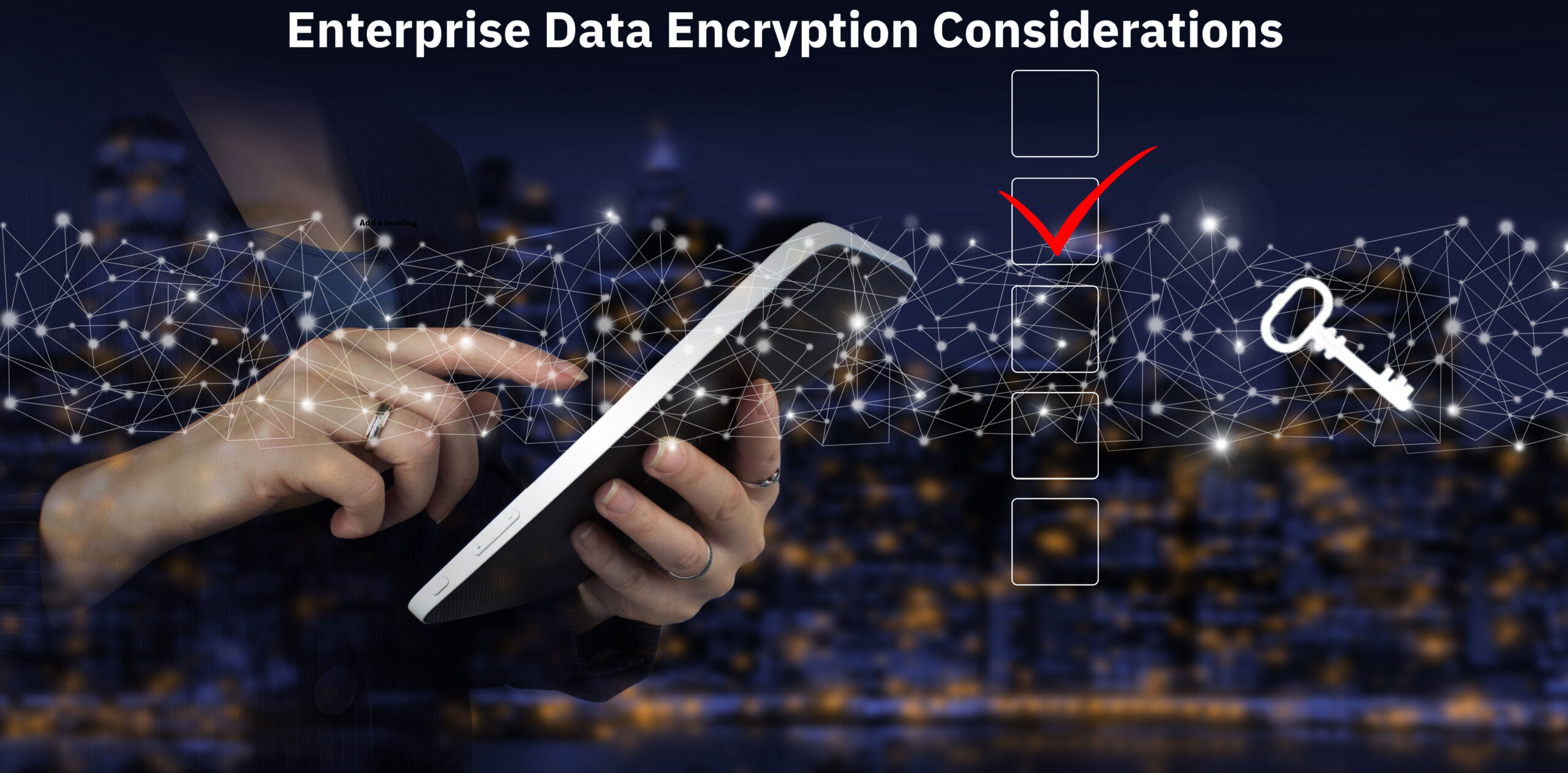Enterprise considerations for implementing data encryption

Organizations are accelerating plans for data encryption, driven by increased security, privacy, and cloud workload protection requirements. However, there are a few different approaches to data encryption and enterprises must consider several factors before choosing the right tools and architecture for their needs. In this blog post, we will explore some of the key considerations that enterprises should keep in mind when implementing data encryption.

Support for compliance regulations
A robust data protection platform must enable organizations to become compliant with relevant regulations and standards such as GDPR, CCPA, HIPAA, and PCI-DSS. This includes implementing appropriate data protection measures and ensuring that encryption policies are consistent with evolving regulatory requirements.
Type of encryption and anonymization
There are several types of encryption and anonymization techniques available, including format-preserving encryption (FPE), tokenization, and data masking. Each technique has its own strengths and weaknesses and should be carefully evaluated before implementation. Leading data protection platforms provide for multiple choices in encryption types and can help make the decision easier.
Centralized policy management
A strong centralized data security control plane ensures that all encryption policies are consistent across the organization. This includes managing access controls, encryption keys, and data access policies. You define policies once and they are automatically implemented across all data stores in the organization. It also helps to ensure there are no gaps in the security infrastructure.
Access control
In the era of digital transformation data routinely spans across on-premises and multi-cloud infrastructure, and is often shared prolifically with partners, developers, and others. Hence, it has become imperative to enforce fine-grained access policies (e.g. which columns to encrypt and how) combined with role-based access control (RBAC) (e.g. who can see which data in what form). Many regulations require such controls as well. Enterprises must ensure that access controls are in place and that they are monitored to prevent unauthorized access.
No-code, low-code, or API
An important consideration is to determine what impact implementing encryption will have on your applications. A no-code platform allows users to implement encryption without having to change any applications. A low-code platform can change applications but the implementation can be faster. An API approach requires more technical expertise and impacts applications the most. A no-code approach saves time and costs and might be a hard requirement when dealing with systems you cannot change such as commercial or legacy apps.
Encryption on disk, in database, or in use
Traditionally we have spoken about encrypting data at rest, which usually meant the data at the file system level on the disk itself. However, as this blog points out that is no longer sufficient against modern attack vectors.
The state-of-the-art approach is to encrypt data in the database, at the column or record level. This allows for fine-grained access control policies based on roles and attributes. This also provides for performance and scalability optimizations via only encrypting the fields with sensitive data.
Encrypting data in use can be achieved via role-based access control and dynamic data masking. Furthermore, new approaches can ensure that while data is being processed (e.g. in memory) it remains protected. This is achieved by advanced encryption methods that enable mathematical functions to execute on encrypted data without the applications having to decrypt the data first.
Performance and latency
Various encryption solutions range greatly in the performance impact felt by applications, especially as data in the cloud can scale to unprecedented levels. Enterprise architects must assess the latency and scalability requirements and ensure application users are not hindered by the encryption tasks.
BYOK and control of data/encryption keys
Some encryption solutions are SaaS based and manage all your data encryption for you as long as you pass them your clear data. This can seem easy but does expose your data to a third-party and their ecosystem of employees and partners. On the other hand, some encryption solutions allow you to host the encryption engine on your own infrastructure. This provides maximum protection and is the preferred choice for most enterprises and privacy sensitive organizations.
When data is hosted in public clouds and SaaS applications, organizations must ensure that they not only encrypt such data but also that they retain controls over the encryption keys with Bring Your Own Key (BYOK). They must also ensure that their encryption solution works well with any key management systems in use, is interoperable in a multi-cloud environment, and provides for centralized management.
In conclusion, implementing data encryption in an enterprise environment requires careful consideration of several factors. By taking all of these factors into account, organizations can ensure that their data encryption strategy is effective and secure and can serve them well for several years into the future.
Join our newsletter
Schedule a Demo with the Baffle team
Meet with Baffle team to ask questions and find out how Baffle can protect your sensitive data.
Easy
No application code modification required
Fast
Deploy in hours not weeks
Comprehensive
One solution for masking, tokenization, and encryption
Secure
AES cryptographic protection
Flexible
No impact to user experience


